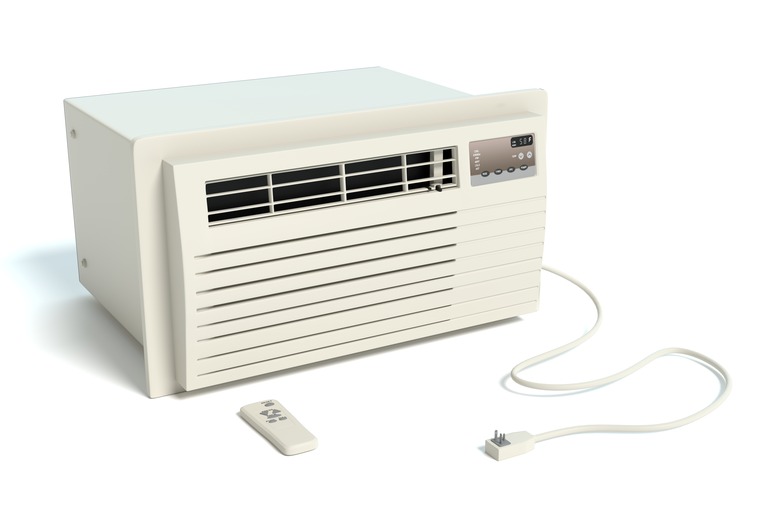Does A 115 Volt Air Conditioner Unit Run On A 110 Outlet?
We may receive a commission on purchases made from links.
When it comes to matching home appliances to your home's electrical capacity, one of the most confusing topics is voltage. Shopping for a window air conditioner can be even more confusing when different models of air conditioners with the same cooling capacity may be listed as 110-volt, 115-volt, or 120-volt. Understanding the differences and how it applies to your specific outlet will help you prevent blowing a fuse or having to rest your breaker.
Tip
A standard wall outlet can power an air conditioner or other appliance that is labeled as 110-volt, 115-volt, or 120-volt.
Standard Household Voltage
Standard Household Voltage
In most homes, the standard household voltage is 120 volts. The power company supplies two, 120-volt cables, or legs, of electrical current to your home. Where large appliances requiring 240-volt service appear in your home, an electrician has married the two cables for a specific outlet to provide the added voltage. Wires going to standard outlets in your walls are 120 volts and are suitable for 110-volt or 115-volt air conditioners.
Plugs on Air Conditioners
Plugs on Air Conditioners
Window air conditioners may use anywhere from 110 volts to 240 volts of electricity to run efficiently. The easiest way to tell what sort of voltage the unit needs if the packaging is not available is to look at the unit's plug.
A standard three-prong plug has a round, grounding prong above — or below, depending on the wall outlet's orientation — two straight prongs, one of which is slightly larger than the other. The larger prong is "neutral" and the smaller prong is the "hot" connector. Units with these plugs use between 110 and 120 volts — standard household electricity. In some cases, a 120-volt window air conditioning unit may have a round, three-prong plug of the same configuration.
A 240-volt plug is larger and will not fit into a standard 120-volt wall outlet. Do not try to change the power cord on the air conditioner to fit the wall outlet or attempt to use an adaptor. An air conditioner that requires 240 volts will not run on a 120-volt outlet.
Wall Outlets and Plugs
Wall Outlets and Plugs
Window units with standard, three-prong plugs may be used in regular household outlets, regardless of whether the air conditioner requires 110-, 115-, or 120-volt electricity. No special outlet is required. However, if the unit has a round plug, you may consider changing the wall outlet to match it.
Voltage Variations and Air Conditioners
Voltage Variations and Air Conditioners
The amount of power flowing to household outlets can fluctuate by several volts due to the distance the power must travel, items plugged into the circuit between the power source and the air conditioner, and other variables. The voltage actually supplied at a wall outlet may be 120 volts, 115 volts, 110 volts, or anything in between. In most cases, the disparity is unnoticeable and normally does not affect the air conditioner's efficiency, even if the package calls for the unit to run on 120 volts and the outlet's actual voltage is only 115 volts.
However, if you plug the air conditioner into an extension cord, the voltage may drop significantly, and this may affect the unit's efficiency. This and the danger of overloading the extension cord and causing a fire are the primary reasons why extension cords are not recommended for use with heavy appliances like air conditioners. If possible, change the air conditioner's power cord to a longer, compatible cord so an extension cord is not needed to reach the outlet. Alternatively, select a heavy-duty extension cord designed to carry the heavier power load of an air conditioner and use that outlet exclusively for the unit.
